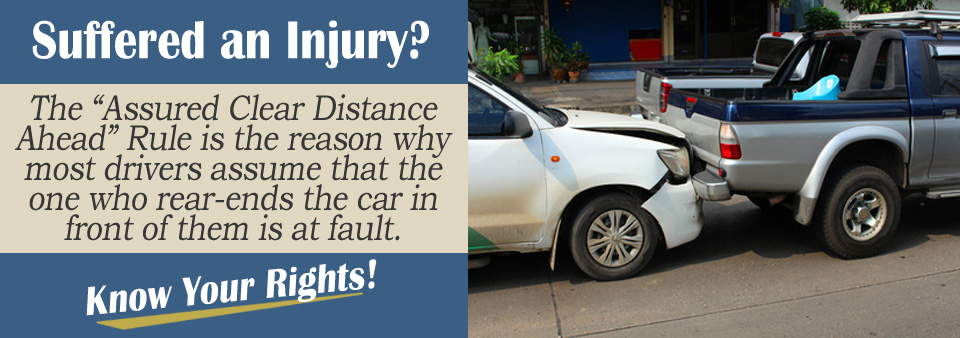When it comes to rear-end accidents, it is not always the driver behind the first car who is at fault. Of course, nine times out of ten, the driver who hits the car from behind is considered the “at-fault” driver, but other circumstances can come into play when considering fault. For instance, what happens when the car in front of you suddenly brakes, leading to a multiple car pile-up? How do you determine fault?
We have asked attorney, Alaina Sullivan, about what you should do. Here is what she had to say:
Duty of Care
Every driver on the road holds a special duty of care to other drivers on the road. Each driver is responsible to others on the road to drive reasonably and prudently under the circumstances they are in.
This includes driving reasonably in all circumstances, such as snow, rain, wind, etc. If the driver does not follow this duty of care, he or she can be found to be negligent. If the driver’s negligent act leads to injuries to another driver, the injured driver has a legal right to then seek compensation from the negligent driver.
Duty of Care and Multiple Cars
However, when several vehicles are involved in a car accident, negligence is harder to prove. Each driver has a duty to the others, so which driver was not following that duty? Was each driver in each car driving appropriately or was one speeding or driving too closely?
If the lead car was speeding and suddenly slams on his brakes, that person was clearly not abiding by his duty of care to others on the road.
In multiple car accidents, more than one driver can be found to be negligent and neglecting his duty of care on the road. That is when consideration of comparative and contributory negligence come into play.

Contributory and Comparative Negligence
The ideas behind both contributory and comparative negligence is that fault can normally be divided between several vehicles. Most states follow comparative negligence which awards damages to drives based on the percentage of fault that driver played in the accident.
If one driver was 80 percent at fault while the other was 20 percent, the driver with the lower percent could get an award or 80 percent of what he would have gotten had he received the entire amount. Contributory negligence is harsher in that any driver who has some portion of fault is barred from getting any compensation.
Very few states follow this rule. Under these theories, if the driver who slammed on the brakes caused the accident, his behavior would be taken into account and any award received would be calculated around that percentage.
“Assured Clear Distance Ahead” Rule
The “Assured Clear Distance Ahead” Rule is the reason why most drivers assume that the one who rear-ends the car in front of them is at fault. Essentially the rule dictates that a driver must keep an assured clear distance between his car and the one in front of them.
When you take driver’s education, you are normally taught to keep two car lengths between you and the car in front of you. The whole point of the ACDA Rule is that you should allow yourself a safe amount of distance to stop when these types of surprise incidents, such as the driver in front of you braking suddenly, happen.
However, exceptions do exist, such as when the driver in front of you is being reckless and does slam his brakes suddenly leaving you little to no time to stop. In these situations, yes, you can normally bypass the ACDA Rule. However, you will need clear evidence that what you are saying occurred actually did occur. A personal injury attorney should be able to assist you in determining if you have a case and helping you proceed.
Contact an Attorney Today
A licensed personal injury attorney will be able to evaluate your case and determine if you have a claim against the other party’s insurance company. To receive the compensation for your medical bills, property damages, and pain and suffering, you should speak with a personal injury attorney in your area today.